

What smartphones are doing to our minds. How To Stop Checking Your Phone: 4 Secrets From Research. Before we commence with the festivities, I wanted to thank everyone for helping my first book become a Wall Street Journal bestseller.

To check it out, click here. If I told you we check our phones 5 billion times a minute you’d probably just shrug and agree. Emotional intelligence. Prism Brain Mapping is an online assessment package that promises… Well… it promises all kind of things, from “Enhanced selling skills” to “Developing female leaders” to 360 degree assessments”, whatever the hell that’s supposed to mean.
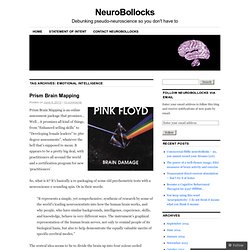
Max Planck Neuroscience on Nautilus: Surprising Network Activity in the Immature Brain. One of the outstanding mysteries of the cerebral cortex is how individual neurons develop the proper synaptic connections to form large-scale, distributed networks.
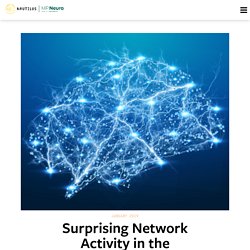
Now, an international team of scientists have gained novel insights from studying spontaneously generated patterns of activity arising from local connections in the early developing visual cortex. These early activity patterns serve as a template for the subsequent development of the long-range neural connections that are a defining feature of mature distributed networks. In a recently published Nature Neuroscience article, scientists at the Max Planck Florida Institute for Neuroscience, Frankfurt Institute for Advanced Studies, Goethe University of Frankfurt, and the University of Minnesota detail how they investigated the visual cortex of the ferret, an ideal model system to explore the early development of networks in the cortex.
Lead image credit: sdecoret / Shutterstock. The human brain can create structures in up to 11 dimensions. Neuroscientists have used a classic branch of maths in a totally new way to peer into the structure of our brains.
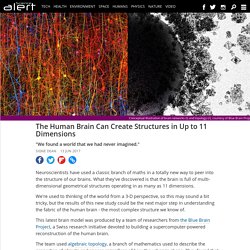
Time on the Brain: How You Are Always Living In the Past, and Other Quirks of Perception. I always knew we humans have a rather tenuous grip on the concept of time, but I never realized quite how tenuous it was until a couple of weeks ago, when I attended a conference on the nature of time organized by the Foundational Questions Institute.

This meeting, even more than FQXi’s previous efforts, was a mashup of different disciplines: fundamental physics, philosophy, neuroscience, complexity theory. Crossing academic disciplines may be overrated, as physicist-blogger Sabine Hossenfelder has pointed out, but it sure is fun. Like Sabine, I spend my days thinking about planets, dark matter, black holes—they have become mundane to me. Brain size and evolution - complexity, "behavioral complexity", and brain size.
From Serendip Organisms have indeed gotten more "complex" over evolutionary time, at least on a broad scale Organisms differ in "behavioral complexity" Organisms differ in brain sizeThere is some relation between "behavioral complexity" and brain size, but humans do not have the largest brains. There is a better relation between "behavioral complexity" and brain size in relation to body size. from Harry J.
Jerison, Paleoneurology and the Evolution of Mind, Scientific American, January, 1976 Why should such a relation exist? A Non-Mathematical Introduction to Using Neural Networks. The goal of this article is to help you understand what a neural network is, and how it is used.
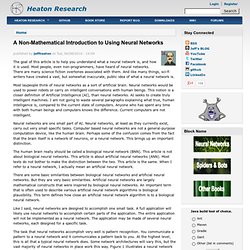
Most people, even non-programmers, have heard of neural networks. There are many science fiction overtones associated with them. An Introduction to Neural Networks. Prof. Leslie Smith Centre for Cognitive and Computational Neuroscience Department of Computing and Mathematics University of Stirling. lss@cs.stir.ac.uk last major update: 25 October 1996: minor update 22 April 1998 and 12 Sept 2001: links updated (they were out of date) 12 Sept 2001; fix to math font (thanks Sietse Brouwer) 2 April 2003 This document is a roughly HTML-ised version of a talk given at the NSYN meeting in Edinburgh, Scotland, on 28 February 1996, then updated a few times in response to comments received.
Please email me comments, but remember that this was originally just the slides from an introductory talk! Connectionist Epistemology. U.S. scientists unveil worlds first computerized human brain map. Predicting random violence by mathematics. How Boolean Logic Works" New Pattern Found in Prime Numbers. (PhysOrg.com) -- Prime numbers have intrigued curious thinkers for centuries.

On one hand, prime numbers seem to be randomly distributed among the natural numbers with no other law than that of chance. But on the other hand, the global distribution of primes reveals a remarkably smooth regularity. This combination of randomness and regularity has motivated researchers to search for patterns in the distribution of primes that may eventually shed light on their ultimate nature. NumberSpiral.com - Home.
Hammack Home. This book is an introduction to the standard methods of proving mathematical theorems.
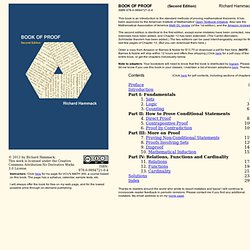
It has been approved by the American Institute of Mathematics' Open Textbook Initiative. Also see the Mathematical Association of America Math DL review (of the 1st edition), and the Amazon reviews. The second edition is identical to the first edition, except some mistakes have been corrected, new exercises have been added, and Chapter 13 has been extended. (The Cantor-Bernstein-Schröeder theorem has been added.) The two editions can be used interchangeably, except for the last few pages of Chapter 13. Artificially Intelligent. Codification.